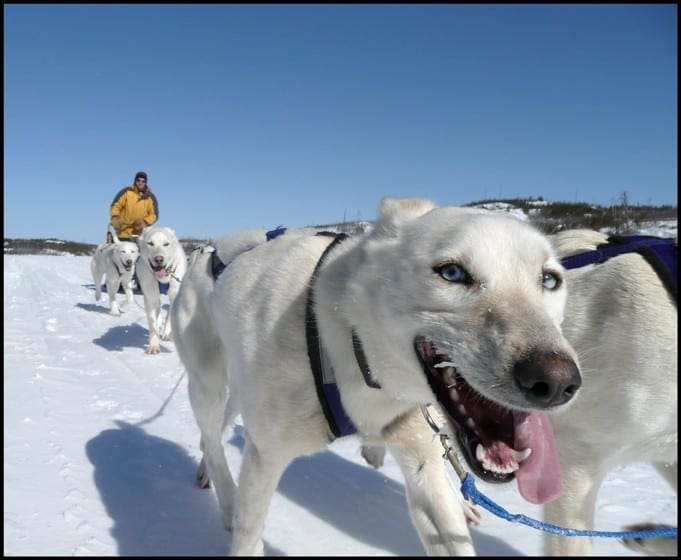Extreme Photography On a Dog Sled

The Boundary Waters Canoe Area Wilderness in northern Minnesota is a popular destination for outdoor enthusiasts of all kinds. In the warm months, canoes glide across picture perfect lakes. No motors are permitted here, and save for a few hiking trails the only way to navigate this massive wilderness area is by canoe.

In the winter months the canoes are put away and the mode of travel switches to snowshoes, skis or in this case dog sleds. I’ve been mushing in northern Minnesota now for almost 11 years with my friends Mark and Mary Black of Black Magic Kennels, www.blackmagickennels.com. On this trip, Mark had been contracted to bring a group of fishermen into the BWCA and in turn asked if I could man the second team. My schedule was open so I agreed.
In true northern Minnesota fashion, the morning we set out was cold and the wind was out of the north at 30 plus mph. Not a friendly environment for man, beast or digital camera! Exposed skin can freeze remarkably fast and sap a camera battery in about the same amount of time. On this trip I had no room for my SLR, so I grabbed my Panasonic TZ3 and stuffed it in an interior pocket of my parka. I’ve been impressed with this little camera since the day it arrived, but I didn’t know how it would handle these extreme conditions.

The key in cold weather conditions is keeping the battery warm, with the TZ3 it was easy enough to keep the whole camera warm in an interior pocket of my parka. When an opportunity presented itself I would trade my glove for the camera, take a few shots and quickly replace the camera in the pocket.
The beautiful thing about this camera is that I can use it with one hand, leaving the other in this case, to hold onto the sled. This allows me the opportunity to capture unique perspectives that would require considerable more effort with an SLR. For example, holding the camera a few inches above the snow for a low angle view of the sled and dogs as they pull us ever further into the wilderness. Another example is holding the camera just in front of another teams lead dog giving you an intimate look at an Alaskan Husky doing what it loves to do, pull.

Self portraits are also a breeze, in this case documenting a frostbit nose. The TZ3 fared better than I and was none the worse for ware when I finally returned to Minneapolis. With a little care and common sense, your digital point and shoot can follow you almost anywhere. Here are a few tips for cold weather photography with your digital camera.

TIPS
1. Keep your camera out of the elements until you’re ready to shoot.
2. Keep a spare battery in your pocket, close to your body.
3. Determine what you’re going to photograph and compose it in your head, then take out your camera and make the photo.
4. Put the wrist strap around your wrist, cold fingers are more apt to drop things.
5. When you finally bring your camera inside, leave it in its case or your jacket pocket for at least an hour. This will limit the amount of condensation by allowing the camera to warm up slowly.



